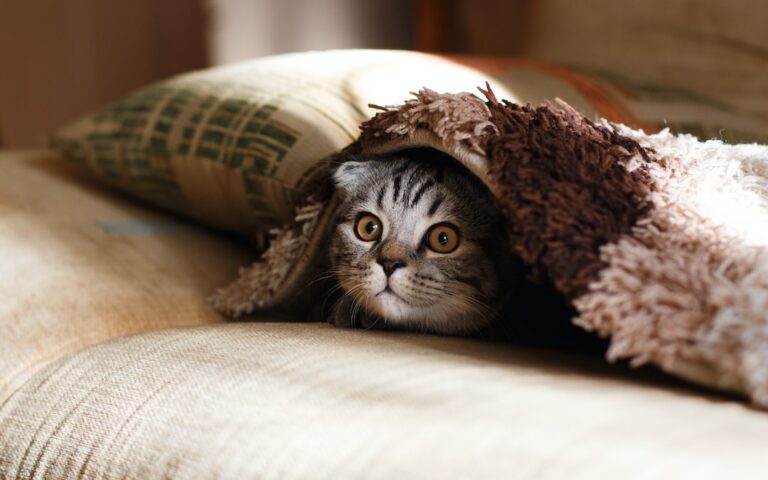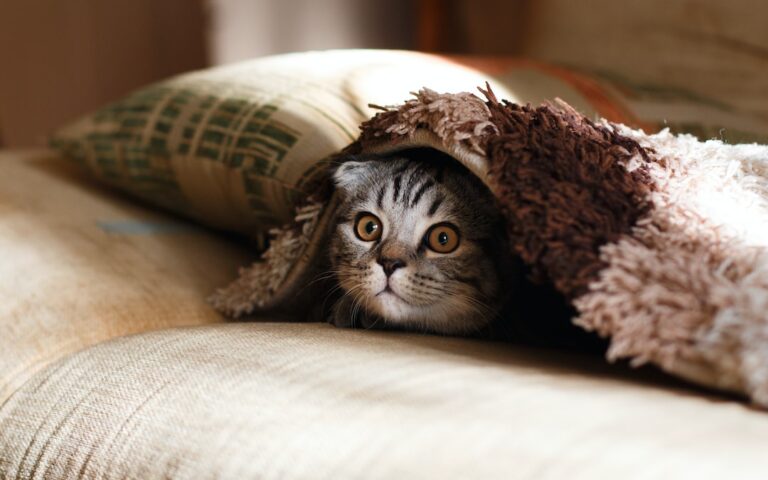Introduction: Understanding the Mysterious World of Cats
Cats have long been one of the most popular pets around the world. Their independent nature and mysterious behavior have captivated humans for centuries. From ancient Egyptian civilizations to modern-day cat memes, cats have always held a special place in our hearts. However, despite their popularity, there is still much that remains unknown about feline behavior and communication.
The mystery surrounding cats is part of what makes them so intriguing. Unlike dogs, who wear their emotions on their sleeves, cats are often more subtle in their expressions. This has led to a fascination with deciphering their behavior and understanding their unique language. In this article, we will explore the world of cats, from the role of a cat behaviorist to the science behind feline behavior, and how we can better communicate with our feline friends.
The Role of a Cat Behaviorist: Insights from Tampa Bay
To gain a deeper understanding of feline behavior, I had the opportunity to interview a cat behaviorist from Tampa Bay. Cat behaviorists are professionals who specialize in understanding and addressing the behavioral issues of cats. They work closely with cat owners to help them better understand their feline companions and provide solutions to common problems.
According to the cat behaviorist I spoke with, understanding feline behavior is crucial for cat owners. Many behavioral issues that cats exhibit, such as aggression, litter box problems, and excessive scratching, can often be traced back to underlying behavioral issues. By understanding the root cause of these problems, cat owners can address them effectively and create a harmonious environment for both themselves and their cats.
Common issues that cat behaviorists address include aggression, anxiety, litter box problems, and destructive behavior. These issues can often be resolved through behavior modification techniques, environmental enrichment, and positive reinforcement training. The cat behaviorist emphasized the importance of patience and consistency when working with cats, as they are sensitive creatures who respond best to gentle and positive approaches.
The Science of Feline Behavior: What We Know and What We Don’t
While cat behaviorists provide valuable insights into feline behavior, there is still much that we don’t know about our feline friends. Current research on feline behavior has shed light on some aspects of their behavior, but there is still a long way to go in fully understanding the complexities of their minds.
One area where more research is needed is in the impact of genetics and environment on feline behavior. While genetics play a role in determining certain traits and behaviors in cats, the environment they are raised in also has a significant impact. Understanding the interplay between genetics and environment can help us better understand why cats behave the way they do and how we can create optimal environments for them.
Another area of research that is still in its infancy is the study of feline emotions. While it is widely accepted that cats experience emotions such as fear, happiness, and contentment, there is still much to learn about the range and depth of their emotional lives. Research in this area can help us better understand how cats perceive and experience the world around them.
Cat Communication: Decoding the Secret Language of Cats
One of the most fascinating aspects of feline behavior is their unique communication methods. Cats communicate through a combination of body language, vocalizations, and scent marking. Understanding these communication cues can help us better understand our cats and strengthen our bond with them.
Body language is a crucial aspect of feline communication. Cats use their body posture, tail position, and facial expressions to convey their emotions and intentions. For example, a cat with an arched back and puffed-up tail is likely feeling threatened or defensive, while a relaxed cat with a gently swaying tail is likely content and at ease.
Vocalizations are another important aspect of feline communication. Cats use a variety of vocalizations, including meowing, purring, hissing, and growling, to express themselves. Each vocalization has a different meaning and can convey a range of emotions, from hunger and affection to fear and aggression. By paying attention to the different sounds your cat makes, you can better understand their needs and emotions.
Understanding your cat’s communication is essential for building a stronger bond with them. By recognizing their body language and vocalizations, you can respond appropriately to their needs and provide them with a sense of security and comfort. This, in turn, will help strengthen the trust and connection between you and your feline friend.
Cat Personalities: Why Every Feline is Unique
Just like humans, cats have unique personalities that shape their behavior and communication. While some cats may be outgoing and social, others may be more reserved and independent. Understanding your cat’s personality can help you tailor your interactions with them and provide them with the appropriate level of stimulation and enrichment.
There are several different feline personality types that have been identified by experts. These include the social butterfly, the independent explorer, the curious adventurer, and the laid-back observer, among others. Each personality type has its own set of characteristics and preferences, and understanding these can help you create an environment that suits your cat’s needs.
Identifying your cat’s personality type can be done through observation and interaction. Pay attention to how your cat responds to different stimuli, such as new people, toys, and environments. Does your cat eagerly approach new people and explore new environments, or do they prefer to observe from a distance? By understanding your cat’s personality, you can provide them with the appropriate level of socialization, play, and mental stimulation.
The Importance of Play: Keeping Your Cat Happy and Healthy
Play is an essential part of a cat’s life. Not only does it provide them with physical exercise, but it also helps keep their minds sharp and their instincts honed. Engaging in regular play sessions with your cat is crucial for their overall health and well-being.
There are several different types of play that cats enjoy. These include interactive play, where you engage with your cat using toys such as wand toys or laser pointers, and solo play, where your cat can entertain themselves with toys such as puzzle feeders or catnip-filled toys. Both types of play are important and should be incorporated into your cat’s daily routine.
Incorporating play into your cat’s daily routine is relatively easy. Set aside dedicated playtime each day, where you engage with your cat using interactive toys. This not only provides them with physical exercise but also strengthens the bond between you and your cat. Additionally, provide your cat with a variety of toys that they can play with on their own, such as puzzle feeders or treat-dispensing toys. This will help keep them mentally stimulated and prevent boredom.
Cat Aggression: Understanding the Causes and Finding Solutions
Aggression is a common behavioral issue in cats and can be a source of frustration and concern for cat owners. Understanding the different types of feline aggression and their underlying causes is crucial for addressing and preventing aggressive behavior in cats.
There are several different types of feline aggression, including territorial aggression, fear aggression, redirected aggression, and play aggression, among others. Each type of aggression has its own set of triggers and underlying causes. For example, territorial aggression is often triggered by the presence of other cats or animals in the cat’s territory, while fear aggression is a response to perceived threats or stressful situations.
Common causes of aggression in cats include lack of socialization, inadequate environmental enrichment, and underlying medical conditions. Cats that have not been properly socialized as kittens may exhibit fear or aggression towards unfamiliar people or animals. Similarly, cats that are not provided with adequate mental and physical stimulation may become bored and frustrated, leading to aggressive behavior.
Addressing and preventing feline aggression requires a multi-faceted approach. This may include behavior modification techniques, such as desensitization and counter-conditioning, to help your cat overcome their fear or anxiety. Additionally, providing your cat with a stimulating environment, regular play sessions, and plenty of hiding spots can help prevent boredom and frustration, which can contribute to aggressive behavior.
Litter Box Issues: Common Problems and How to Fix Them
Litter box issues are another common problem that cat owners face. Cats are naturally clean animals and prefer to have a clean and comfortable place to do their business. When they start exhibiting litter box problems, it is often a sign that something is amiss.
There are several common litter box issues that cats may experience, including refusing to use the litter box, urinating or defecating outside the litter box, and excessive scratching or digging in the litter box. These issues can be caused by a variety of factors, including medical conditions, stress or anxiety, and dissatisfaction with the litter box setup.
To troubleshoot and fix litter box problems, it is important to first rule out any underlying medical conditions. If your cat is experiencing pain or discomfort while using the litter box, they may associate the litter box with negative experiences and avoid using it. Once medical issues have been ruled out, it is important to evaluate the litter box setup and make any necessary changes. This may include providing multiple litter boxes in different locations, using a different type of litter, or ensuring that the litter box is kept clean and odor-free.
Cat Enrichment: Creating a Stimulating Environment for Your Feline Friend
Creating a stimulating environment for your cat is essential for their physical and mental well-being. Cats are natural hunters and explorers, and providing them with opportunities to engage in these behaviors can help prevent boredom and destructive behavior.
There are several ways to enrich your cat’s environment. This can include providing them with vertical spaces, such as cat trees or shelves, where they can climb and perch. Cats also enjoy having access to windows or outdoor enclosures, where they can observe the outside world and engage in natural behaviors such as birdwatching.
Additionally, providing your cat with interactive toys, puzzle feeders, and scratching posts can help keep them mentally stimulated and prevent boredom. Cats also enjoy having hiding spots and cozy resting areas where they can retreat and feel safe.
Creating a safe and stimulating indoor environment for your cat is relatively easy. By providing them with a variety of toys, scratching posts, and vertical spaces, you can help satisfy their natural instincts and prevent destructive behavior. Additionally, regularly rotating toys and providing new and novel experiences can help keep your cat engaged and prevent boredom.
Conclusion: Building a Stronger Relationship with Your Cat through Understanding and Empathy
Understanding feline behavior and communication is crucial for building a strong bond with your cat. By recognizing their unique personalities, interpreting their body language and vocalizations, and providing them with a stimulating environment, you can create a harmonious and fulfilling relationship with your feline friend.
The benefits of building a strong bond with your cat are numerous. Not only will you have a happier and healthier cat, but you will also experience the joy and companionship that comes with having a close relationship with your pet. By taking the time to learn about and understand your cat, you can provide them with the love, care, and attention they need to thrive.
In conclusion, cats are fascinating creatures with complex behaviors and communication methods. By delving into the world of feline behavior, we can gain a deeper understanding of our feline friends and provide them with the best possible care. Whether it’s seeking the help of a cat behaviorist, learning about the latest research on feline behavior, or simply observing and interacting with our cats, there is always more to discover and learn. So, let’s continue to explore the mysterious world of cats and build stronger relationships with our feline companions.
If you’re a cat owner in Tampa Bay, you may be interested in learning more about cat behavior and how to better understand your feline friend. Check out this insightful article on our website that discusses the role of a cat behaviorist and how they can help address common behavioral issues in cats. Whether it’s litter box problems, aggression, or excessive scratching, a cat behaviorist can provide valuable guidance and solutions. Read more here to discover the benefits of consulting a cat behaviorist and improving your cat’s well-being.




